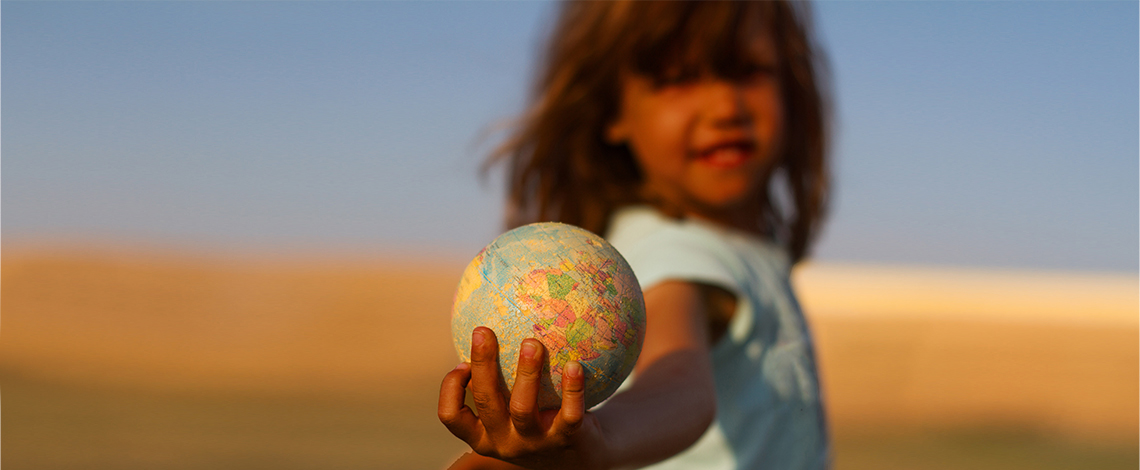Identifying, confronting and disrupting racism is essential and complex. As a profession, we have work to do. This effort can take many forms, including:
- individual learning;
- building relationships and sharing experiences;
- developing curriculum; or
- advocating for change within our sector.
All of these activities can be part of a Registered Early Childhood Educator’s (RECE’s) Continuous Professional Learning (CPL) goals and activities.
This article will be shared in two parts. Stay tuned for Part 2, coming in July 2021.
About Norheen
Norheen Jaffrey RECE is a Professional Development Facilitator for Student Learning Support Services in the Early Years within a school board.
Here, she shares an early experience with racism, and provides some reflection questions she’s used as an adult to further her knowledge and understanding of racism and prejudice.
Recalling her first run-in with racism
I grew up in West Yorkshire, England, where I lived in a mostly white neighbourhood. To my recollection, we were the only Pakistani Muslim family in that community during the ‘60s.
I was around ten years old when it was the Queen’s Silver Jubilee. Each neighbourhood had planned festivities to celebrate the Queen’s milestone. We’d received a postcard in the mail for a potluck celebration, and I remember my family talking about what food they could bring. My mum insisted on making samosas, even though they’re really time-consuming.
The morning of the neighborhood celebration, I’d put on a traditional South Asian outfit, a Salwar Kameez, which had the colours of the Union Jack. I added some red, blue and silver bangles to my outfit before heading downstairs to meet the rest of the family. My mum and eldest sister had been cooking since the early hours of the morning and were putting the finishing touches onto the chutneys.
That afternoon, we carried our snacks to the tables that had been set up in the street for the potluck, to which other families were adding their contributions.
I noticed some of the ladies whispering to each other as we arrived. My mum and sister started talking in Urdu — our native dialect — about where to put the food. My sister asked one of the ladies if she could rearrange some of the trays so my mum could put down the heavy container she had. There was an awkward silence, and I remember being confused.
One of the ladies told them there was enough food and no more was required. My sister started to protest and the woman blurted out the racial slur, “Pakis are not welcome.” I felt fear running through my entire body when she said that derogatory and demeaning abbreviation of my Pakistani heritage.
My mum’s eyes were filled with tears. She didn’t speak English well, but could tell by their body language that we were not welcome. Needless to say, we left. As a child, I struggled to understand what we had done wrong. My dad tried to explain it to me, but I think I was too young. And, while I’ve learned to forgive, I’ve carried that experience with me well into my adult years.
A lifelong impact
Consider Norheen’s story: As an RECE, think about the impact you have on the children in your professional care. And also the impact you have on your workplace – the environment, families, your colleagues, and anyone else you encounter during work.
“I cannot say enough about the importance of feeling valued, having a sense of belonging and being included,” Norheen says. “That day, I felt I did not belong because of my race, culture and religious faith.”
Norheen now makes it a priority to learn more about anti-racism, including anti-Black racism, and anti-oppression. “I dive into what I hear and what I learn with empathy, compassion, vulnerability and sensitivity,” she says. “I’m aware that, on my learning journey as I strive to make a difference, I will encounter challenges and experience discomfort, but I’m confident in my constructive approach.”
Striving for change
So how does Norheen move forward with collaborative inquiry as she co-facilities professional learning opportunities for other educators? “I ask many relevant and necessary questions,” she says.
Looking for ways to address bias, or how to make the learning environment inclusive? Review the Practice Guideline on Diversity and Culture.
As you begin or continue to build an inclusive learning and work environment, consider some of Norheen’s questions:
- How might I support my colleagues to think critically about their pedagogy, practice and beliefs?
- How might I support my colleagues to make transformative changes in their practice?
- What practice strategies do I need to put into place to create a safe and inclusive environment so that all participants feel a sense of belonging?
- How do we work as a community to build relationships in order to understand and acknowledge the complexities of teaching, learning and unlearning in a collaborative format?
- How can we shift the environment to a space that is equitable and inclusive?
“Asking critical questions of my colleagues and pushing back when I can –respectfully – we’re working together to understand that anti-racism and anti-oppression work is not an ‘add-on’ to our teaching in the early years,” Norheen says. “This work is necessary, mandatory and long overdue for the well-being of children, families and each other as colleagues.”
Missed the first two articles in the series? Find them here:
| Does learning about anti-Black racism count as a professional learning activity? Absolutely! | Anti-racism as part of your Continuous Professional Learning |
Connect with us! If you’re an RECE with experiences to share related to your ECE work or how you’re addressing racism as part of your CPL, email us at practice@college-ece.ca.
Stay tuned for Part 2 in July 2021.

